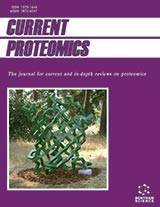Abstract
The increasing emergence of antibiotic resistant pathogens has led to the search for new antimicrobials that can be used in the clinical settings. One such example is represented by bacteriocins which are a heterogenous group of antimicrobial peptides. They are classified into four groups based on their structure, molecular mass, thermostability, enzymatic susceptibility and mechanism of action. Administered alone or in combination with antibiotics, bacteriocins may represent a promising strategy to control infections and also to reduce the risk of food contamination. However, their use for such applications is still limited by the lack of appropriate delivery systems. This review summarizes aspects regarding the molecular structure of the first two classes of bacteriocins, i.e. lantibiotics and non-lantibiotics and their biosynthesis stages and regulation. Furthermore, we highlight the contribution of nanotechnology for optimising bacteriocins in regards to their antimicrobial activity, controlled release and protection from proteolysis.
Keywords: Biosynthesis, class II bacteriocins, drug release, lantibiotics, molecular structure, nanocomposites, nanofibers, nanoparticles, nisin.
Graphical Abstract
Current Proteomics
Title:Class I and II Bacteriocins: Structure, Biosynthesis and Drug Delivery Systems for the Improvement of their Antimicrobial Activity
Volume: 11 Issue: 2
Author(s): Lia-Mara Ditu, Mariana Carmen Chifiriuc, Diana Pelinescu, Ionela Avram, Gratiela Pircalabioru and Grigore Mihaescu
Affiliation:
Keywords: Biosynthesis, class II bacteriocins, drug release, lantibiotics, molecular structure, nanocomposites, nanofibers, nanoparticles, nisin.
Abstract: The increasing emergence of antibiotic resistant pathogens has led to the search for new antimicrobials that can be used in the clinical settings. One such example is represented by bacteriocins which are a heterogenous group of antimicrobial peptides. They are classified into four groups based on their structure, molecular mass, thermostability, enzymatic susceptibility and mechanism of action. Administered alone or in combination with antibiotics, bacteriocins may represent a promising strategy to control infections and also to reduce the risk of food contamination. However, their use for such applications is still limited by the lack of appropriate delivery systems. This review summarizes aspects regarding the molecular structure of the first two classes of bacteriocins, i.e. lantibiotics and non-lantibiotics and their biosynthesis stages and regulation. Furthermore, we highlight the contribution of nanotechnology for optimising bacteriocins in regards to their antimicrobial activity, controlled release and protection from proteolysis.
Export Options
About this article
Cite this article as:
Ditu Lia-Mara, Chifiriuc Carmen Mariana, Pelinescu Diana, Avram Ionela, Pircalabioru Gratiela and Mihaescu Grigore, Class I and II Bacteriocins: Structure, Biosynthesis and Drug Delivery Systems for the Improvement of their Antimicrobial Activity, Current Proteomics 2014; 11 (2) . https://dx.doi.org/10.2174/157016461102140917122421
| DOI https://dx.doi.org/10.2174/157016461102140917122421 |
Print ISSN 1570-1646 |
| Publisher Name Bentham Science Publisher |
Online ISSN 1875-6247 |
 12
12
- Author Guidelines
- Bentham Author Support Services (BASS)
- Graphical Abstracts
- Fabricating and Stating False Information
- Research Misconduct
- Post Publication Discussions and Corrections
- Publishing Ethics and Rectitude
- Increase Visibility of Your Article
- Archiving Policies
- Peer Review Workflow
- Order Your Article Before Print
- Promote Your Article
- Manuscript Transfer Facility
- Editorial Policies
- Allegations from Whistleblowers























